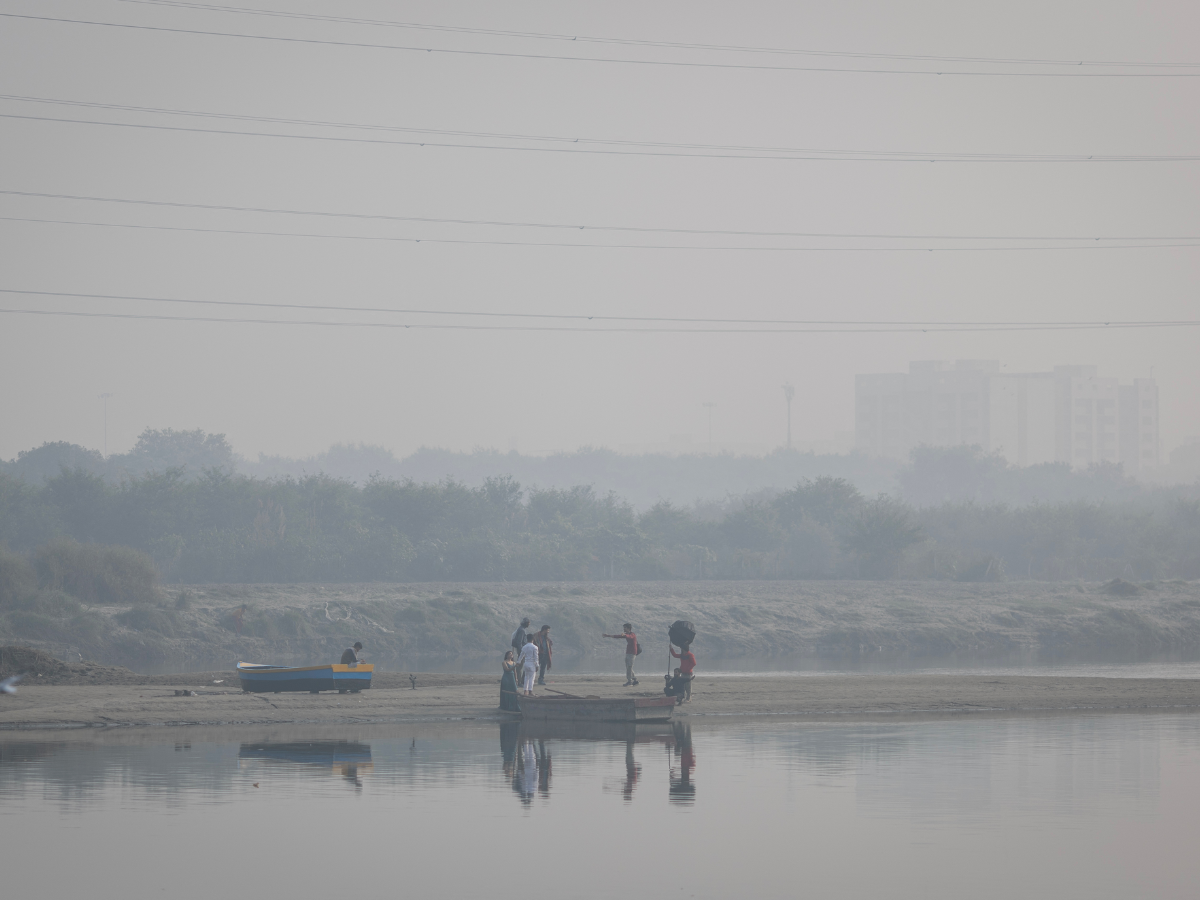Delhi witnesses marginal improvement in air quality following light rainfall
According to the official data recorded at 7:00 am on Tuesday, an AQI of 374 (very poor) was recorded at Anand Vihar.
)
The national capital experienced a slight relief in air pollution levels on Tuesday morning after light rainfall graced several parts of the Delhi-National Capital Region the previous day. According to the System of Air Quality and Weather Forecasting and Research (SAFAR-India), Delhi's air quality transitioned from 'severe' to 'very poor,' with an Air Quality Index (AQI) of 354, down from 400 recorded at 9 am on Monday.
The respite came as light rains showered various areas of Delhi-NCR on Monday, offering a breath of fresh air to citizens grappling with elevated levels of air pollution over the past fortnight.
The Safdarjung Observatory, Delhi's primary weather station, registered 7.2 mm of rainfall until 8:30 pm. The rain not only contributed to improved air quality but also increased wind speed to 20 kilometers per hour, aiding in the dispersion of pollutants, as stated by an official from the India Meteorological Department.
The air quality index, ranging from 0 to 500, categorises air quality as 'good,' 'moderate,' 'poor,' 'very poor,' and 'severe.' Earlier in the day, a thick layer of smog enveloped Delhi, reducing visibility to 600 meters at 8 am at the Safdarjung Observatory and 800 meters at the Indira Gandhi International Airport.
The recent surge in AQI levels followed the relaxation of several restrictions by the Central Government last Saturday, including permitting construction activities and the entry of polluting trucks into Delhi. However, restrictions under stages 1 to 3 of the Graded Response Action Plan (GRAP) remained in effect.
As of now, Delhi has encountered 10 days of severe air quality in November, an increase compared to the three such days recorded in November last year. In 2021, the city witnessed 12 severe air quality days in the same month, marking the highest since the Central Pollution Control Board (CPCB) began monitoring.
According to a collaborative project by the Delhi government and the Indian Institute of Technology (IIT)-Kanpur, biomass burning has emerged as the primary contributor to Delhi's air pollution, accounting for 31 to 51 percent of the capital's polluted air in recent days. In response, Delhi Environment Minister Gopal Rai has instructed relevant agencies to strictly enforce restrictions on polluting vehicles wand address the rising incidents of biomass burning.
The current AQI for Delhi stands at 387 at 10 pm, showing improvement from 395 at 4 pm and 400 at 9 am. The 24-hour average AQI, recorded at 4 pm every day, reflects a trend with levels of 395 on Sunday, 389 on Saturday, 415 on Friday, 390 on Thursday, 394 on Wednesday, 365 on Tuesday, 348 on Monday, and 301 on November 19.
Authorities consider an AQI between zero and 50 as 'good,' 51 and 100 as 'satisfactory,' 101 and 200 as 'moderate,' 201 and 300 as 'poor,' 301 and 400 as 'very poor,' 401 and 450 as 'severe,' and above 450 as 'severe-plus.' The city's focus remains on addressing the immediate air quality concerns while working towards sustainable solutions to combat the persistent pollution challenge.
With input from agencies
Get Latest Business News, Stock Market Updates and Videos; Check your tax outgo through Income Tax Calculator and save money through our Personal Finance coverage. Check Business Breaking News Live on Zee Business Twitter and Facebook. Subscribe on YouTube.
RECOMMENDED STORIES
12:11 PM IST











 Delhi Police holds meeting with NCR counterparts to tackle pollution problem
Delhi Police holds meeting with NCR counterparts to tackle pollution problem Delhi Air Pollution Update: AQI in 'very poor' category in several areas; a summary of key readings from Delhi, Noida, Gurugram
Delhi Air Pollution Update: AQI in 'very poor' category in several areas; a summary of key readings from Delhi, Noida, Gurugram Delhi Air Pollution: Schools ordered to conduct classes in hybrid mode - Check latest updates
Delhi Air Pollution: Schools ordered to conduct classes in hybrid mode - Check latest updates  AQI Today Update: Delhiites remain breathless with city still covered in smog; all you need to know
AQI Today Update: Delhiites remain breathless with city still covered in smog; all you need to know Delhi NCR struggles against air pollution; 'very poor' to 'severe' AQI levels recorded in several regions
Delhi NCR struggles against air pollution; 'very poor' to 'severe' AQI levels recorded in several regions